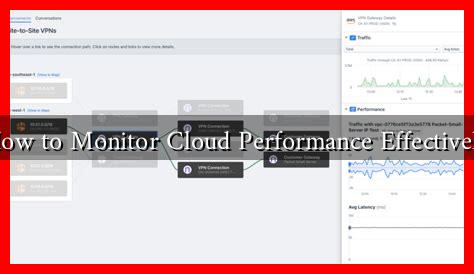-
Table of Contents
How to Monitor Cloud Performance Effectively
As businesses increasingly migrate to cloud environments, the need for effective cloud performance monitoring has never been more critical. Cloud performance monitoring involves tracking the performance of cloud-based applications and services to ensure they meet the required standards of speed, reliability, and availability. This article explores the best practices for monitoring cloud performance effectively, providing insights, tools, and strategies to optimize your cloud infrastructure.
Understanding Cloud Performance Metrics
Before diving into monitoring strategies, it’s essential to understand the key performance metrics that should be tracked. These metrics provide a comprehensive view of how well your cloud services are functioning.
- Latency: The time it takes for data to travel from the source to the destination. Lower latency is crucial for real-time applications.
- Throughput: The amount of data processed in a given time frame.
. High throughput indicates efficient data handling.
- Uptime: The percentage of time the service is operational. A high uptime percentage is vital for business continuity.
- Error Rates: The frequency of errors encountered during operations. Monitoring error rates helps identify issues before they escalate.
- Resource Utilization: The extent to which cloud resources (CPU, memory, storage) are being used. Efficient resource utilization can lead to cost savings.
Choosing the Right Monitoring Tools
With numerous cloud monitoring tools available, selecting the right one can be overwhelming. Here are some popular options that cater to different needs:
- Amazon CloudWatch: Ideal for AWS users, it provides real-time monitoring and operational data.
- Datadog: A comprehensive monitoring solution that integrates with various cloud services and offers customizable dashboards.
- New Relic: Focuses on application performance monitoring, providing insights into user experience and application health.
- Prometheus: An open-source tool that excels in monitoring containerized applications, particularly in Kubernetes environments.
When choosing a tool, consider factors such as ease of integration, scalability, and the specific metrics you need to monitor.
Implementing Effective Monitoring Strategies
Once you have the right tools in place, implementing effective monitoring strategies is crucial. Here are some best practices:
- Set Baselines: Establish performance baselines to understand normal operating conditions. This helps in identifying anomalies.
- Automate Alerts: Configure alerts for critical metrics to ensure timely responses to performance issues.
- Regularly Review Performance: Conduct periodic reviews of performance data to identify trends and areas for improvement.
- Utilize APM Tools: Application Performance Management (APM) tools can provide deeper insights into application behavior and user experience.
- Conduct Load Testing: Simulate high traffic scenarios to assess how your cloud infrastructure handles stress.
Case Study: Successful Cloud Performance Monitoring
A notable example of effective cloud performance monitoring can be seen in the case of Netflix. As a leading streaming service, Netflix relies heavily on cloud infrastructure to deliver content to millions of users worldwide. By utilizing a combination of custom-built monitoring tools and third-party solutions, Netflix can track performance metrics in real-time, allowing them to quickly identify and resolve issues. This proactive approach has contributed to their impressive uptime and user satisfaction ratings.
Conclusion
Monitoring cloud performance effectively is essential for businesses that rely on cloud services. By understanding key performance metrics, choosing the right monitoring tools, and implementing best practices, organizations can ensure their cloud infrastructure operates at peak efficiency. As demonstrated by industry leaders like Netflix, a robust monitoring strategy not only enhances performance but also improves user experience and satisfaction. In a rapidly evolving digital landscape, investing in effective cloud performance monitoring is not just beneficial; it is imperative for success.
For more information on cloud performance monitoring, you can visit Amazon CloudWatch or Datadog.





